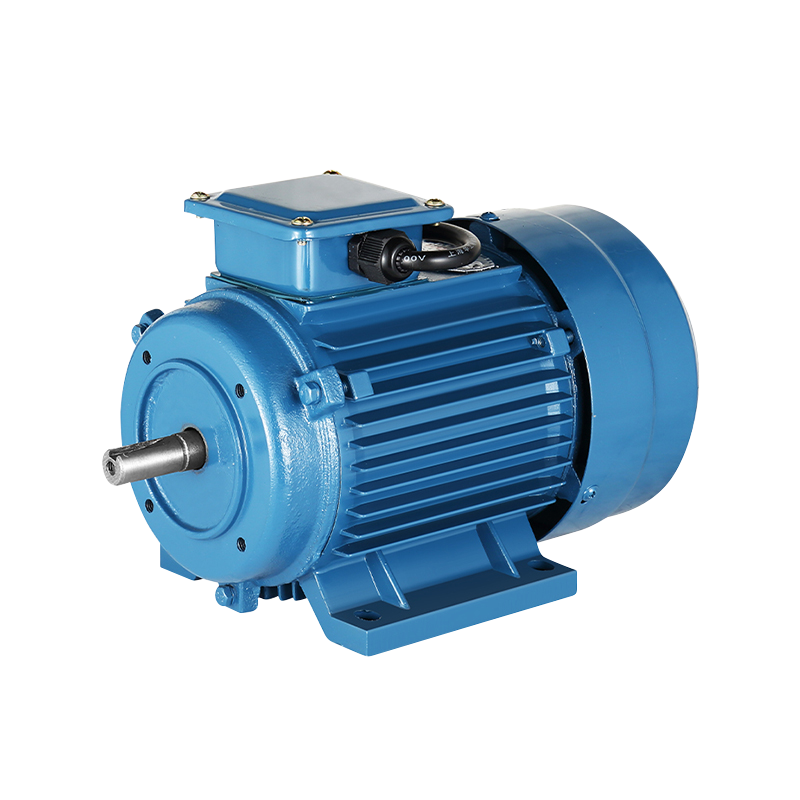Three-Phase Asynchronous Electric Motor: Powering the Future of Industrial and Commercial Applications
The Three-Phase Asynchronous Electric Motor has emerged as a cornerstone technology in modern industrial and commercial applications. Known for its durability, efficiency, and versatility, this motor type is integral to a wide range of systems, from manufacturing machinery to HVAC units. As industries strive for greater energy efficiency and operational reliability, the Three-Phase Asynchronous Electric Motor continues to set the standard for electric motor performance.
A Three-Phase Asynchronous Electric Motor, also known as an induction motor, operates on three-phase electrical power. This type of motor is distinguished by its asynchronous operation, meaning that the rotor does not rotate at the exact speed of the magnetic field generated by the stator. Instead, it operates at a slightly slower speed, a characteristic known as slip, which is essential for generating torque.
The three-phase configuration provides several advantages, including a constant power delivery that results in smoother and more efficient motor operation. This is in contrast to single-phase motors, which can experience power fluctuations. The Three-Phase Asynchronous Electric Motor's design also eliminates the need for brushes and commutators, reducing maintenance requirements and improving durability.
The Three-Phase Asynchronous Electric Motor is incredibly versatile, finding applications across various industries. In the manufacturing sector, these motors are used to drive a wide range of machinery, including conveyor belts, pumps, compressors, and fans. Their ability to handle heavy loads and operate continuously makes them ideal for demanding industrial environments.
In the HVAC industry, Three-Phase Asynchronous Electric Motors are crucial components of air conditioning systems, heating units, and ventilation equipment. They provide the necessary power to ensure efficient air circulation and temperature control, contributing to energy savings and improved indoor air quality. The motors' reliability and long lifespan also reduce the need for frequent replacements, offering cost benefits to building operators.
Agriculture and water treatment facilities also benefit from the use of Three-Phase Asynchronous Electric Motors, particularly in the operation of irrigation systems and water pumps. These motors' efficiency and robust performance are essential in ensuring consistent water flow, which is critical for crop irrigation and wastewater management.
One of the primary reasons for the widespread adoption of Three-Phase Asynchronous Electric Motors is their energy efficiency. These motors are designed to convert electrical energy into mechanical energy with minimal losses, making them more efficient than many other motor types. This efficiency translates into lower energy consumption, which is not only cost-effective for businesses but also beneficial for the environment.
By reducing energy usage, Three-Phase Asynchronous Electric Motors help decrease greenhouse gas emissions associated with electricity generation. This is a crucial advantage as industries and governments worldwide work towards reducing their carbon footprints and meeting stringent environmental regulations. Additionally, the longevity and reliability of these motors mean less frequent replacements and waste, further contributing to sustainable practices.
The future of the Three-Phase Asynchronous Electric Motor is marked by continuous innovation and improvement. Recent developments have focused on enhancing motor efficiency and performance through advanced materials, better cooling systems, and improved motor control technologies. For instance, the integration of variable frequency drives (VFDs) allows for precise control of motor speed and torque, optimizing performance based on real-time operational needs.
Smart motor technologies are also on the rise, incorporating sensors and IoT capabilities to provide detailed monitoring and diagnostics. These smart motors can communicate operational data to maintenance systems, enabling predictive maintenance and reducing downtime. This not only improves operational efficiency but also extends the lifespan of the motor.
Another significant trend is the development of motors with reduced environmental impact. This includes motors that use less earth materials and those designed to be easily recyclable. Such innovations are in line with the growing demand for eco-friendly technologies in industrial and commercial applications.
-
Feedback

 English
English 中文简体
中文简体






